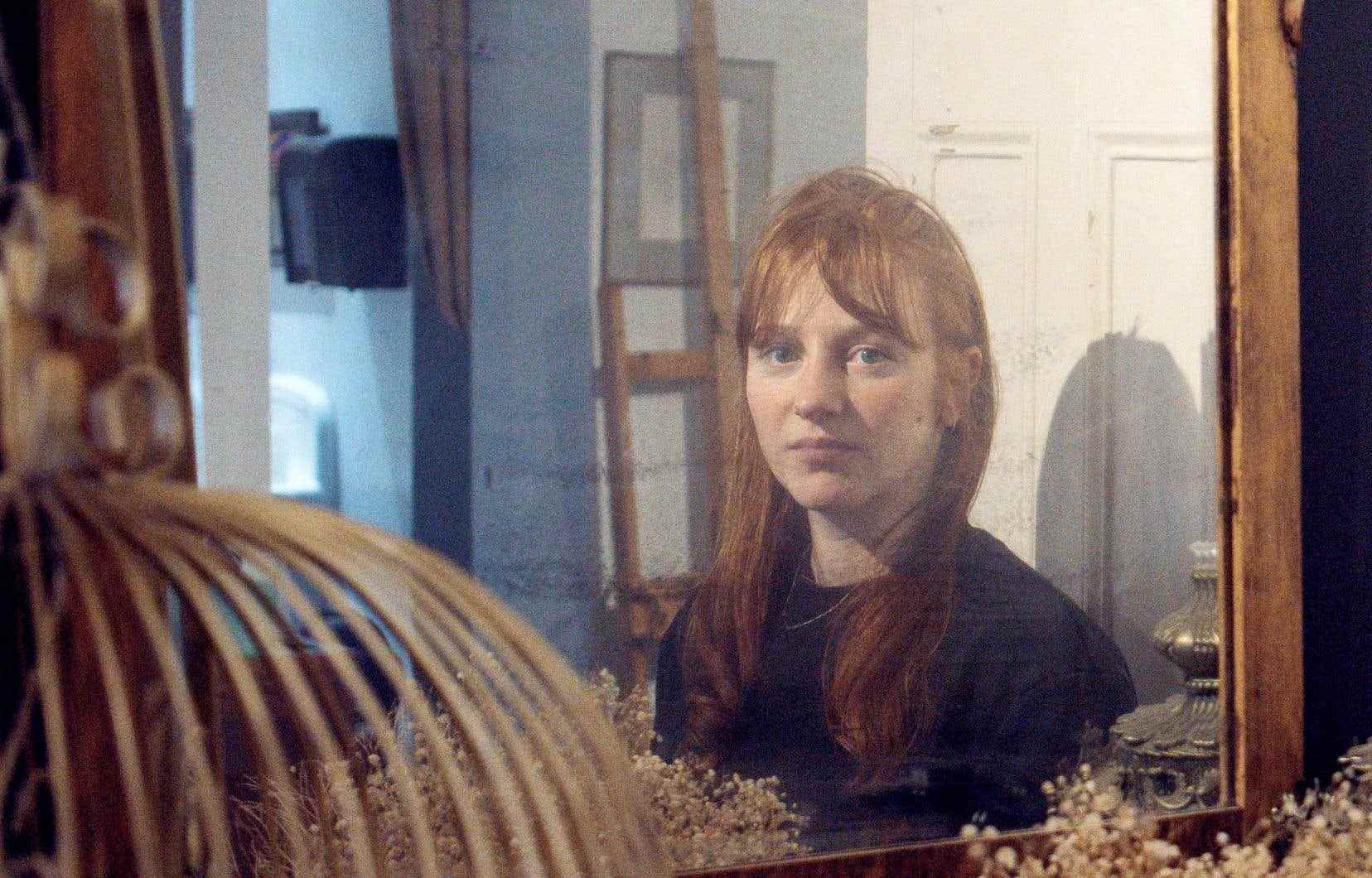They speak a language of their own, punctuated with English words, which they often decline at full speed, so much so that it is difficult to grasp it. In front of the screen of their computer or their telephone, they scrutinize the slightest flaw in their skin, the slightest bulge in their belly. The teenage girls that Fanie Pelletier followed to directdamsels, her first feature-length documentary, are girls today. They live with one foot in the physical world, the other in the virtual world. For better, no doubt, but also for worse.
It is through the world of live videos, where applications allow you to speak to strangers on the Internet, that Fanie Pelletier entered the hyperconnected world of today’s teenage girls.
“These are live videos that allow young girls to answer questions from Internet users around the world,” said the director in an interview. These applications are mainly teenagers, and mostly girls, who frequent them, although they are open to everyone. She discovered a disturbing world there, and very exposed young girls, both naive and conscious, in active search of identity. His quest began on Periscope, a now obsolete application, and continued on TikTok. “Now there are people of all ages on these apps, but it’s teenagers who are the target audience. On TikTok, even me, who am in my thirties, I feel old. When I go there, there’s a cacophony of sights and sounds, I don’t quite feel like I belong,” she says.
Two distinct identities
After having already shot a short film on teenagers, Fanie Pelletier has chosen this time to focus on the world of girls. “I think the way they experience it, their relationship with social media is very different from that of boys,” she says. Teenage girls often indulge in it freely. But the representation they display there is not the same as that of the real world, in particular thanks to image modification applications, such as Facetune. One of them changed the appearance of her belly a thousand times before deciding to leave the network. Another admits to carefully choosing the representations of herself that she reveals.
Before shooting the film, Fanie Pelletier had created an Instagram group, which allowed her to see what kinds of content teenage girls were dating online. “They are bombarded with images of women’s bodies, images of perfection,” she says. “But they don’t have the maturity to have a critical distance. […] They see these images of bodies, faces of selfies, perfected by filters, and they say to themselves: “I would like to be like that too”. »
Paradoxically, it is on these same networks that young girls sometimes reveal their intimacy, in its darkest sides, and closer.
“I discovered things through the film, the relationship to the body and to beauty, eating disorders which are much more present than I thought. I found that very disturbing,” says the director.
A gender quest
The quest for identity of these young girls often breaks down into gender categories. Always online, young people declare themselves in turn asexual, aromantic, abrosexual (gender fluid), bisexual or lesbian, and, sometimes, simply heterosexual.
“I didn’t think it was so present in their heads,” says Fanie Pelletier. Especially in one of the groups, it was really an obsession. Their orientation changed during the film. It fluctuated. I discovered something extremely beautiful in this opening, but also a confusion, because there are so many possible identities. In adolescence, we try to define ourselves, and the multitude of possibilities makes it even more difficult. »
Fanie Pelletier’s youngsters sometimes tackle this internet world in groups, or individually. The group is obviously more reassuring, especially when, as happens in the documentary, the damsels in question come across an Internet user in full masturbation, who will end up “blocked”. The group of girls does not seem unduly affected. It was a risk worth taking, it seems.
Exposed girls
“That’s what’s tricky,” she remarks. They are aware that, when they do this, everyone has access to it. I spoke to a girl. She said to me “How come you have access to this, how come you have my video?”. I sent him the link, I told him: “Your video is still available. Me, I’m benevolent, I’m writing to you, I’ll never use the video if I don’t have your permission. But know that there are plenty of people who can be malicious and take your video for plenty of other reasons. »
The phenomenon is global. And Fanie Pelletier collected videos shot by young girls speaking Russian or living in Cambodia.
“I saw a lot of loneliness, but also women who finally found discussion there,” she says. A young English-speaking girl seemingly in deep depression, struggling with an eating disorder, takes five hours to decide whether or not to take a bite of cake.
“She was really alone, confirms Fanie Pelletier. But I saw in his videos how good it felt to get people’s comments. At times she was depressed, and people everywhere comforted her and cheered her up. »
Picture perfect and distress
